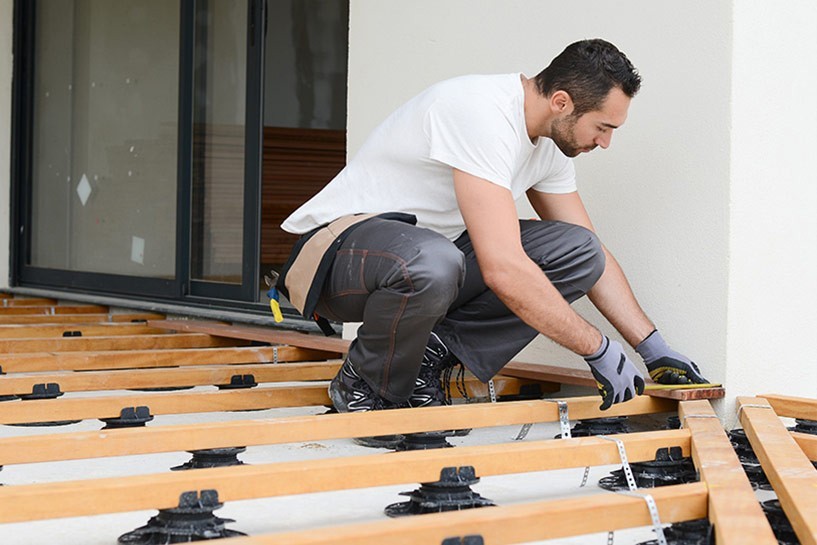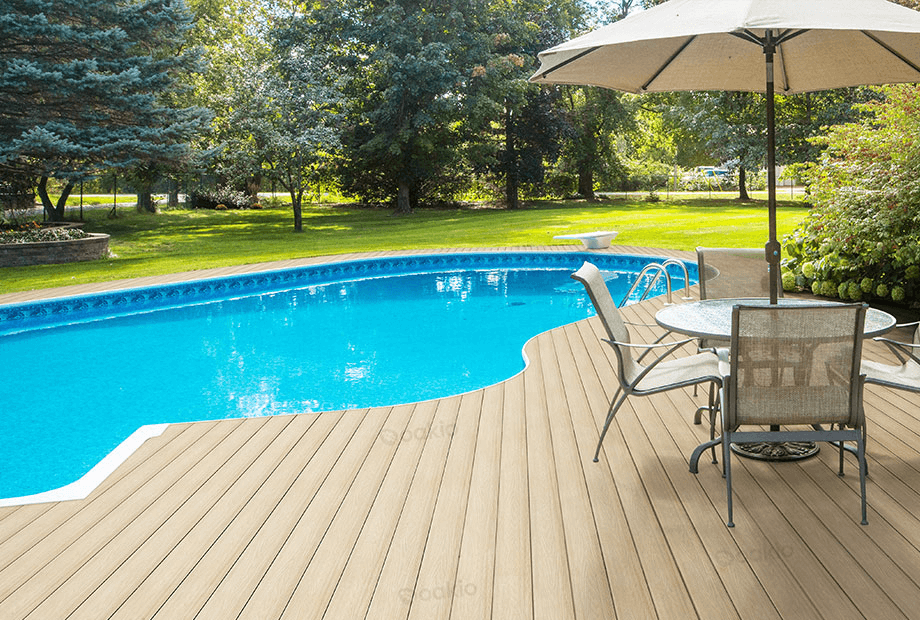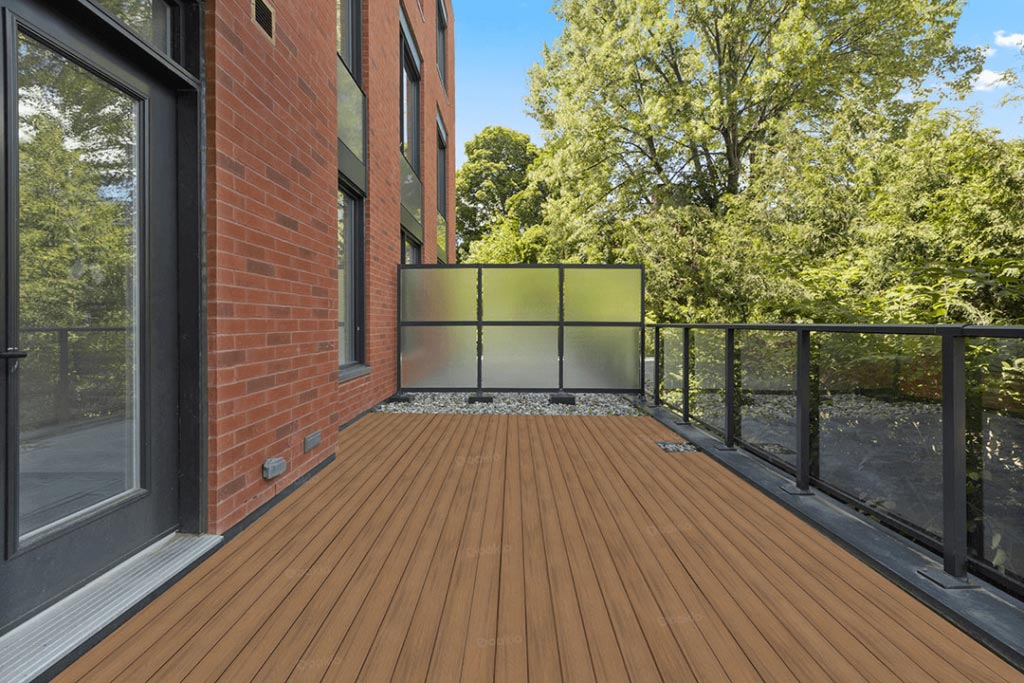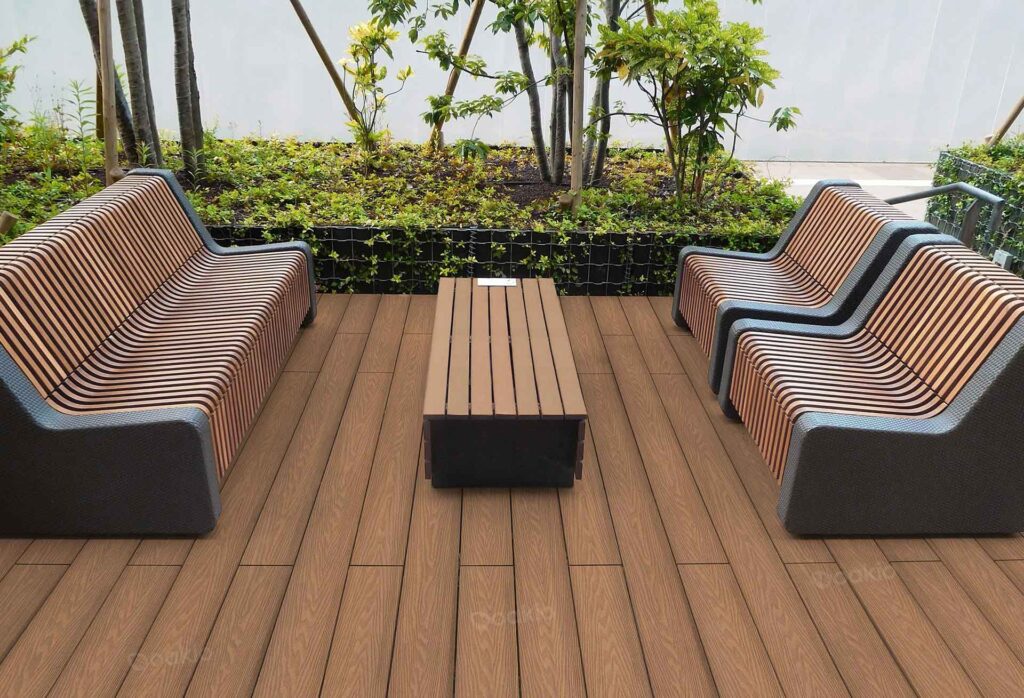DIY WPC Deck Tiles for Courtyard and Balcony
Creating the perfect outdoor space can be challenging, especially when considering flooring options. The WPC DIY decking offers an innovative solution to the selection of outdoor deck tiles and the creation of personal outdoor havens, be it a balcony or courtyard.
In today’s fast-paced world, having a personal outdoor retreat like a balcony or courtyard is a cherished dream for many. Traditional choices such as ceramic tiles, anti-corrosion wood, or plain cement often fall short of providing the desired comfort and aesthetic appeal. This is where DIY composite deck tiles, particularly WPC composite deck tiles, come into the picture, offering a perfect blend of beauty, functionality, and sustainability. Weighing all the pros and cons of traditional options and WPC DIY decking, why not choose WPC decking as the perfect choice for outdoor spaces?

What Are DIY Composite Deck Tiles?
Wood plastic composite deck tiles, namely WPC deck tiles, represent a breakthrough in outdoor flooring solutions. These innovative WPC outdoor deck tiles are made from a blend of recycled wood fibers and high-density polyethylene plastics, resulting in a flooring material that combines the classic beauty of wood with the durability and resilience of plastic. WPC DIY deck features easy and do-it-yourself installations, making it a popular choice for homeowners looking to upgrade their outdoor spaces.
Advantages of DIY WPC Deck Tiles for Courtyard and Balcony

WPC composite deck tiles offer a perfect alternative to traditional flooring options. The WPC deck tiles offer an aesthetically pleasing, durable, and low-maintenance solution for courtyards and balconies. Made from recycled materials, these environmentally friendly tiles enhance the visual appeal of outdoor spaces with a variety of colors and textures. They are durable, weather-resistant, and require minimal upkeep. WPC deck tiles are also comfortable and safe, providing a slip-resistant and splinter-free surface, free from harmful toxins. Unlike some traditional decking materials that may contain harmful substances, WPC decking is free from toxins such as arsenic trioxide, offering a safer alternative for health-conscious homeowners.
Oakio WPC composite deck tiles have all the above advantages and provide a safe, slip-resistant surface that is comfortable underfoot, making them ideal for family-friendly outdoor areas. Importantly, they are free from harmful toxins, ensuring a healthier environment for your home.
How to DIY Your Courtyard or Balcony with WPC Decking Tiles
Enhancing your courtyard or balcony with WPC deck tiles is a great DIY project that can dramatically transform your outdoor space. Whether for a small balcony, a courtyard, a rooftop, or a large patio, WPC decking tiles provide a quick, durable, and stylish solution to outdoor flooring.
Here’s a step-by-step comprehensive guide on how to install WPC decking tiles to DIY an outdoor composite deck:
Planning Your Project
Start by carefully measuring the length and width of your courtyard or balcony to calculate the total square footage. This will determine the number of WPC decking tiles you’ll need. When selecting your tiles, choose from a wide range of colors, patterns, and textures available in WPC deck tiles to find an option that aligns with both your aesthetic preferences and the functional needs of your space.
Gathering Materials and Tools
In addition to the WPC deck tiles, consider using a weed barrier for installations directly on soil to prevent unwanted plant growth under your DIY WPC deck. For a polished appearance, incorporate edge or corner strips for a clean finish. Ensure you have basic tools such as a tape measure for accurate sizing, a saw for custom cutting tiles, and essential safety equipment like gloves and goggles for protection during the installation process.
Preparing the Surface
Before installing WPC outdoor deck tiles, ensure that the existing surface is flat, clean, and free of debris. The levelness of the installation surface also needs to be checked. If installing over soil, make sure it’s compacted and flat. This preparation is crucial for a smooth installation process.
Laying WPC Composite Deck Tiles
Installing WPC composite deck tiles is a straightforward process. Begin laying the tiles from one corner of the space. Most outdoor WPC decking tiles feature an interlocking system that easily snaps together, eliminating the need for complex tools or professional help. Start at one corner and work your way across the area, trimming the tiles as needed to fit the space. Remember to align the first tile carefully as it will set the pattern for the rest of the space. Place the next tile so that its interlocking edges align with the first tile. Press down to snap them together. Continue this process, adding tiles and snapping them into place.
Custom Fitting
When fitting the WPC deck tiles around edges or obstacles, use a saw to precisely cut the tiles for a custom fit and always wear protective gear. After the tiles are laid, add edge or corner strips along the areas where the tiles meet the wall or railing. This not only ensures a neat and polished finish but also helps in stabilizing the tiles and maintaining their alignment.
Decorating and Furnishing
Enhance your space by adding comfortable outdoor furniture like sofas and dining sets, introducing a variety of planters and decorative items such as weather-resistant cushions and outdoor rugs which add a personal touch and color. Consider installing outdoor lighting, like string lights or solar lamps, to create a warm and inviting atmosphere during the evenings.

Finishing Touches
Once the DIY composite deck tiles are in place, walk over them to ensure they are securely interlocked and there are no uneven edges. Then add finishing touches like trim pieces or transition strips to create a seamless look. You can further enhance the space with outdoor furniture, potted plants, or decorative elements to personalize your new outdoor area.
Maintenance and Care
It’s important to maintain and take care of your DIY composite deck. Sweep the deck to keep the DIY composite deck free of debris. Clean periodically with soap and water to remove any dirt or stains. Then check for any loose boards or fasteners and make repairs as needed.
Conclusion
In conclusion, DIY WPC deck tiles offer an ideal solution for transforming outdoor spaces like balconies and courtyards into beautiful, comfortable, and sustainable outdoor living spaces. Their ease of installation, combined with numerous practical and aesthetic benefits, makes them an excellent choice for DIY enthusiasts and homeowners looking to enhance their outdoor environments.

If you’re aspiring to revamp your patio, balcony, courtyard, or other outdoor living spaces, you can consider using Oakio DIY WPC deck tiles. Combining ease of installation with aesthetic versatility, durability, and environmental sustainability, the Oakio WPC outdoor deck titles empower homeowners to creatively and efficiently upgrade their balconies and courtyards, or other outdoor spaces. Embrace the revolution of DIY composite decking with Oakio and create a beautiful, functional, and eco-friendly outdoor retreat. By choosing WPC DIY decking tiles, you can create a delightful outdoor retreat where you can relax and enjoy the beauty of nature right at your doorstep.
Trending Reading
What Are the Differences Between the WPC Board and PVC Board?
[2024 Update] How Long Does WPC Decking Last?










